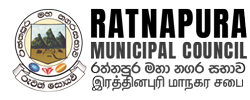Total population 53426. Total property is nearly 21,000. Currently, survey reports show that around one lakh people are coming to Ratnapura city from other areas for work.
Ratnapura city is considered to have been inhabited even in prehistoric times and was also known as Saparapura, Saparagam and Saparagrama in the past. Ratnapura city is located at a distance of 101 km from Colombo. Ratnapura is situated in a basin between the south-western slopes of the central hills.
The jurisdiction of the Mahanagara Sabha is located between 6-41 and 6-42 North Latitudes and between 80-23 and 80-24 East Longitudes. The size of this jurisdiction is 22.18 square kilometers. The total area of the city is 2218.4 hectares. Characterized by steep hilly areas, river valleys, lowlands and plains. Kalu Ganga and Way Ganga flow through the center of the city. About 13% of the total land area is subject to floods.
The annual temperature of the jurisdiction is 29.44 degree centigrade. The maximum temperature is recorded in the month of March and the minimum temperature is recorded in the month of January. Average annual rainfall is 3000 to 4000 mm. The heaviest rainfall of the year is the southwest monsoon from May to June and the inter-monsoon period of September and October.
Total population is 53426. The total property size is close to 21,000. Survey reports indicate that at present, about one lakh people come to Ratnapura city daily from other areas for work.
From 1817 to 1833, Ratnapura was governed under a collector.Ratnapura Local Board was established on 11.03.1877. Mr. H. Weiss, who worked as the agent of Sabaragamaqwa province government at that time, took office on 21.05.1887.
From 1895 to 1920, 15 agents of the government have worked as presidents of Ratnapura Local Board.
Local Government came to be known as Provincial Government Council (U.D.C). Ratnapura Provincial Government Council came into operation from 01.01.1922. The number of its members is 05.
There were 10 people in the Provincial Government Council until 1938.
The first constituencies formed were,
In this provincial government council, it was ordered that all the residents of the city should work as laborers or pay a fee of 02 rupees instead. Body tax was abolished in 1927.Ratnapura Metropolitan Municipality came into operation from 01.01.1940.1940.01.24 Mr. A.C. Artigala became the first Municipal Council Chairman.From 1940 to 1966, there have been 12 presidents of the city council.
At the beginning of the 1960s, during the administration of Mr. VH Abeyratne, Ratnapura Municipal Councils council work began to be done in Sinhala. Until then, the council proceedings were conducted in English. Free school books have also been provided to the children of the city at this time. This was maintained until the government started making school books free.
On 07.10.1967, 15 constituencies were named by the Extraordinary Gazette Notification No. 14, 769/2 and on 26.06.1967, Ratnapura Municipality was made a Maha Municipal Council.
As the first Mayor of Ratnapura after it became a Municipal Council
In addition, there have been special commissioners on 06 occasions.
For the first time, voting was held under proportional voting system on 19.05.1979. With this voting system, the representatives who were called members until now were called MPs and they had to pay a monthly allowance and provide telephone facilities.


